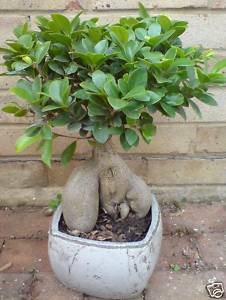Gardening with vinegar has many uses and benefits and best of all, it is safe to use, doesn't harm the environment, is freely available and it is cheap! It really is, therefore your organic and eco-friendly pesticide, insecticide, and herbicide.
Here you will learn about these benefits and pick up a few tips along the way. It can also be used full-strength or diluted depending on the job at hand. It can also be used quite readily in the kitchen, bathroom and other areas of the house, but today, we are going to just concentrate on the outside areas. One word of warning, however, remember that when it is all said and done, you are working with acid, so make sure you protect your eyes. So what exactly can vinegar do for you?
First of all, for those of you who are plagued by pests and little critters in the garden, fret no more. It will keep cats at bay if you spray in areas you want to deter them, particularly that sand-pit you may have in the garden for the children but those cats will insist on using as their own private toilet! Heavily spray full-strength vinegar around the edges of the sandpit and remember to re-apply after it rains.
Are those rabbits eating your vegetables, particularly your beans and peas? Soak corncobs in full strength vinegar for a couple of hours until they are thoroughly soaked. You may even soak them over-night if you wish. Then place the cobs strategically around your veggie patch. They will keep rabbits away for as long as you re-soak your corncobs every two weeks.
Do you have an ant problem? Again you can apply this full-strength to the ants and they will not come anywhere near the stuff. This is very useful if you find a trail of them making a way into your house. Just spray the thresholds and reapply every couple of days to ensure that they stay away.
Slugs are real pests, because they eat both vegetables, especially lettuces and plants, especially hostas. In this case, vinegar acts as a poison to the slugs because, if you spray slugs with it directly, they will die. You can treat snails in exactly the same way. However, because vinegar is also a herbicide, be careful where you spray your vinegar. Salvias for example will die, if they are sprayed as a casualty.
Are your fruit trees being invaded by fruit flies? Try this fruit fly bait, which is deadly and effective. Take 1 cup of water, a half a cup of cider vinegar, a quarter of a cup of sugar and 1 tablespoon of molasses. Mix it all together. Take old tin cans without their lids and make two holes in opposite ends for wire handles. Attach the handles and add an inch of the mixture to each can. Hang 2 - 3 tins in each tree. Check on the traps on a regular basis to refill and clean when necessary.
After you have been digging in the garden with your gardening tools, soak them in a bucket of half-strength vinegar. This will act as a fungicide and kill off anything that may be lurking unsuspectingly so that there is no possibility of cross-contamination when you use them next.
Are your garden plants struggling and your roses suffering from black spot or other fungal diseases? Take 2 tablespoons of white vinegar and mix it with 4 litres of compost tea. Now spray your garden plants with this mixture and see the difference. For roses, the method is slightly different. Take 3 tablespoons of cider vinegar, and mix it with 4 litres of water to control those fungal diseases. Of course, don't forget the compost tea either on your roses to get the best results. For powdery mildew take 2-3 tablespoons of cider vinegar and mix with 4 litres of water and spray your plants. This will help control the problem.
What about your acid-living plants like azaleas, gardenias and rhododendrons? Are they flowering as well as they could be? If not, increase the soil's acidity. In hard water areas, add 1 cup of vinegar to 4 litres of tap water. It will also release iron into the soil for the plants to use. And if you have too much lime in your garden, add vinegar to neutralize it.
Do you have weeds coming up in between your paving slabs on our driveway or pathway that you cannot remove by hand? Don't use a herbicide that is know to damage the environment. Use an eco-friendly alternative instead. Take 1 litre of boiled water, 2 tablespoons of salt and 5 tablespoons of vinegar. Mix altogether, and whilst still hot, pour onto the offending plants.
Did you know that you can improve your germination success rate of seeds by using vinegar? This is especially useful for those seeds that are more difficult to germinate such as asparagus and okra, morning glories and moonflowers. Rub the seeds gently first between two pieces of coarse sandpaper. Then soak the seeds overnight in 500 ml of warm water, 125 ml of vinegar and a squirt of washing-up liquid. Plant the next day as normal. You can use the same method, but without the sandpaper for nasturtiums, parsley, beetroot, and parsnips.
And finally, are your chickens pecking each other? Add a tablespoon of cider vinegar to their drinking water, and they will stop!
Written by Kathryn Bax, owner and web site developer of Country Living and Farm Lifestyles: A Worldwide Farmers' Market for Farm Food, Farm Accommodation, Game Farms, Wine Farms, Farming Jobs, Farm Swaps, Rural Services, Country Living and much, much more. Buy local and support your local farmers.
http://www.countryfarm-lifestyles.com/


